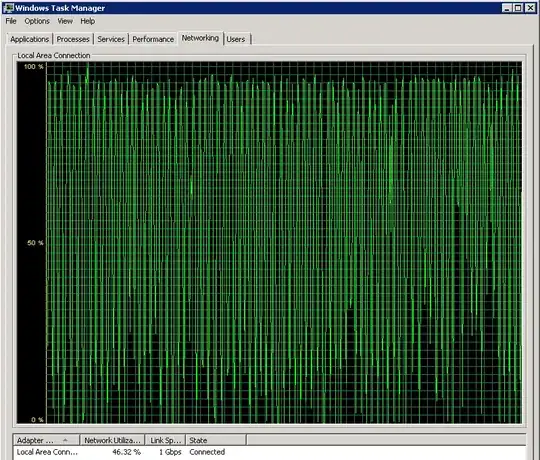Here is a picture that perfectly describes my situation:

Is there some way I can smooth this transfer out to be near 90% usage by increasing a buffer somewhere? It seems like windows grabs a chunk of the drive, empties the cache, then waits for the drive to grab another. Instead of pulling data off the disk as constantly.
Setup:
Windows Small Business Server 2011 hosted on an ESXi (.vmx and .vmdk are on mirrored SSD's) box pushing a 10gb file to a FreeNAS machine (capable of 100MB/s transfers from other clients) over iSCSI (need direct block access for SBS2011 backups.)
Looking in the FreeNAS monitoring it's averaging around 600Mb/s.